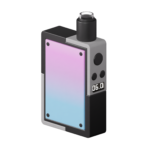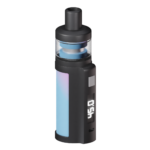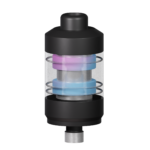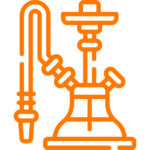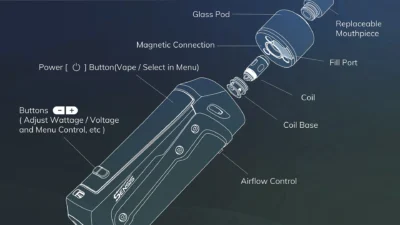Anatomy of a Vape
Vaping has become increasingly popular in recent years, offering an alternative to traditional smoking. Understanding the anatomy of a vape can help users make informed decisions and ensure they use their devices safely and effectively. In this blog post, we’ll break down the main components of a vape and their functions.
1. Battery
The battery is the powerhouse of the vape, providing the necessary energy to heat the e-liquid. There are two main types of batteries:
- Internal Battery: Built into the device and not removable. These are typically charged via USB.
- External Battery: Removable and replaceable. These often require a separate charger.
Battery Safety Tips
- Always use the recommended charger.
- Avoid overcharging the battery.
- Keep batteries away from extreme temperatures.
2. Atomizer
The atomizer is the component that heats the e-liquid, turning it into vapor. It consists of a coil and a wick. There are different types of atomizers:
- Rebuildable Atomizers (RBA): Allow users to build their own coils.
- Sub-Ohm Tanks: Designed for higher wattage and larger vapor production.
- Disposable Atomizers: Pre-built and not intended for reuse.
Maintaining Your Atomizer
- Regularly clean the atomizer to prevent residue build-up.
- Replace coils as needed to ensure optimal performance.
3. Tank
The tank holds the e-liquid and is attached to the atomizer. Tanks come in various sizes and materials, such as glass or plastic. Key features to consider include:
- Capacity: How much e-liquid the tank can hold.
- Top-Fill vs. Bottom-Fill: The method of refilling the tank.
- Adjustable Airflow: Allows users to control the amount of air that mixes with the vapor.
Filling the Tank
- Follow the manufacturer’s instructions to avoid leaks.
- Ensure the tank is securely attached to the atomizer.
4. E-Liquid
E-liquid, or vape juice, is the substance that gets vaporized. It typically contains a mixture of propylene glycol (PG), vegetable glycerin (VG), nicotine, and flavorings.
Choosing E-Liquid
- PG/VG Ratio: Higher PG offers a stronger throat hit, while higher VG produces more vapor.
- Nicotine Strength: Available in various strengths to suit different preferences.
- Flavor: A wide range of flavors is available, from fruity to dessert-inspired.
5. Mouthpiece
The mouthpiece, or drip tip, is where users inhale the vapor. It can be made from various materials, including plastic, metal, or glass. Some vapes allow for interchangeable mouthpieces to suit user preferences.
Cleaning the Mouthpiece
- Regularly clean the mouthpiece to maintain hygiene.
- Use a soft cloth or cotton swab to remove any residue.
Conclusion
Understanding the anatomy of a vape can enhance your vaping experience and ensure you use your device safely. From the battery to the mouthpiece, each component plays a crucial role in the overall functionality of the vape. By maintaining and using each part properly, you can enjoy a satisfying and safe vaping experience.
Our Products:
- ARGUS POD-VOOPOO VAPE POD KIT
- ARGUS PRO 80W POD MOD KIT By VOOPOO
- Geek Vape Wenax M1 Pod Kit
- CALIBURN AK2 UWELL POD SYSTEM
- CALIBURN G By UWELL POD SYSTEM
OUR CATEGORY




